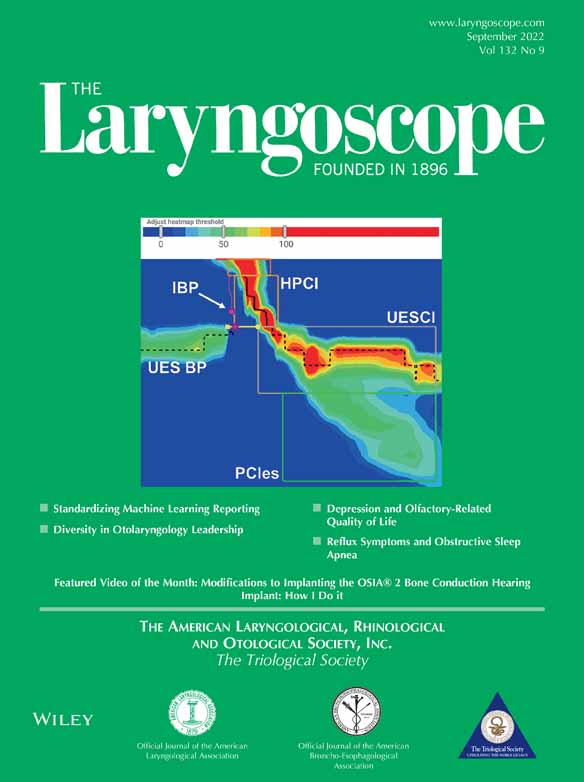Non-Squamous Cell Malignancies of the Larynx
Editor's Note: This Manuscript was accepted for publication on December 27, 2021
This abstract was accepted for poster presentation at COSM; AHNS, Austin, TX USA, May 2019.
The authors have no funding, financial relationships, or conflicts of interest to disclose.
Abstract
Objectives/Hypothesis
Non-squamous cell carcinoma (SCC) malignancies are rare, but well described laryngeal pathologies. However, the epidemiology and clinical behavior of these tumors is not well studied.
Study Design
Retrospective cohort study.
Methods
Patients diagnosed with non-squamous cell larynx cancer from 2004 to 2017 in the National Cancer Database were selected. Demographic, clinicopathologic factors, treatments, and survival were analyzed. Univariable and multivariable cox regression were performed. Survival was compared with a propensity score-matched (PSM) population of laryngeal SCC patients.
Results
A total of 136,235 cases of larynx cancer were identified. After excluding SCC variants, 2,172 (1.6%) patients met inclusion criteria. The most common histology was chondrosarcoma (374, 17.2%), followed by small cell (345, 15.9%), and spindle cell carcinoma (268, 12.3%). The most common treatment was surgery (683, 31.4%) followed by chemoradiation (409, 18.8%) and surgery and adjuvant radiation (288, 13.3%). Overall, 3- and 5-year survival was 67.9% and 59.4%, respectively. In multivariate analysis controlling for age, stage, comorbidity, histology, and treatment modality; chondrosarcoma had the best survival (hazard ratio [HR] 0.11, confidence interval [CI] 0.07–0.19, P < .001). In a PSM population, matched for age, stage, comorbidity, and treatments; non-SCC patients had significantly lower survival (51.5% vs. 59.9%, P < .001).
Conclusion
A diverse range of non-squamous cell malignancies occur in the larynx. In general, these tumors have poor survival, with few exceptions such as chondrosarcoma. While the majority of these histologies undergo surgical-based treatments in other sites, only 53% of patients underwent surgical-based treatment in the larynx. These data could guide clinicians in determining the outcome of treatment in these patients.
Level of Evidence
4 Laryngoscope, 132:1771–1777, 2022




